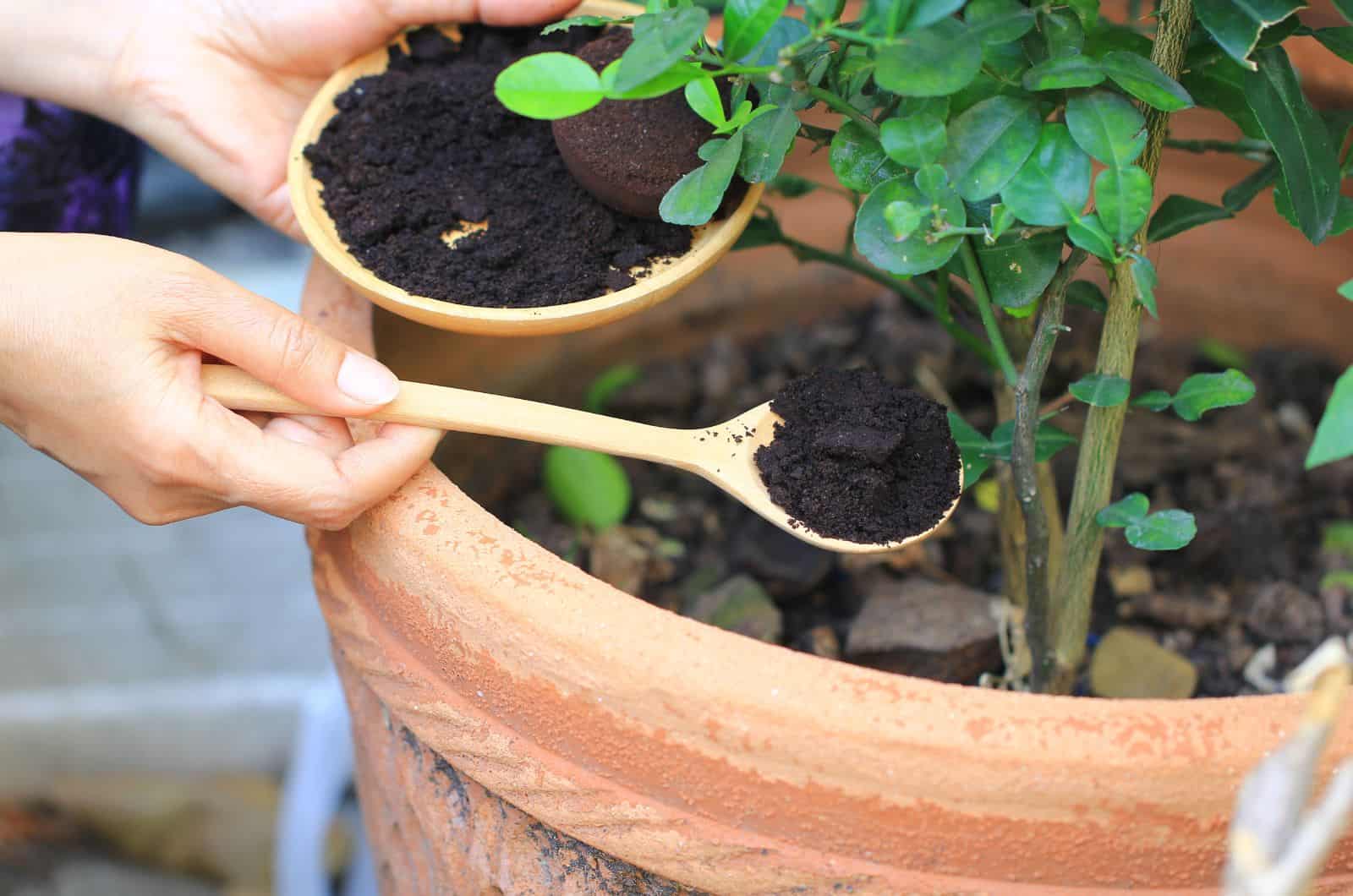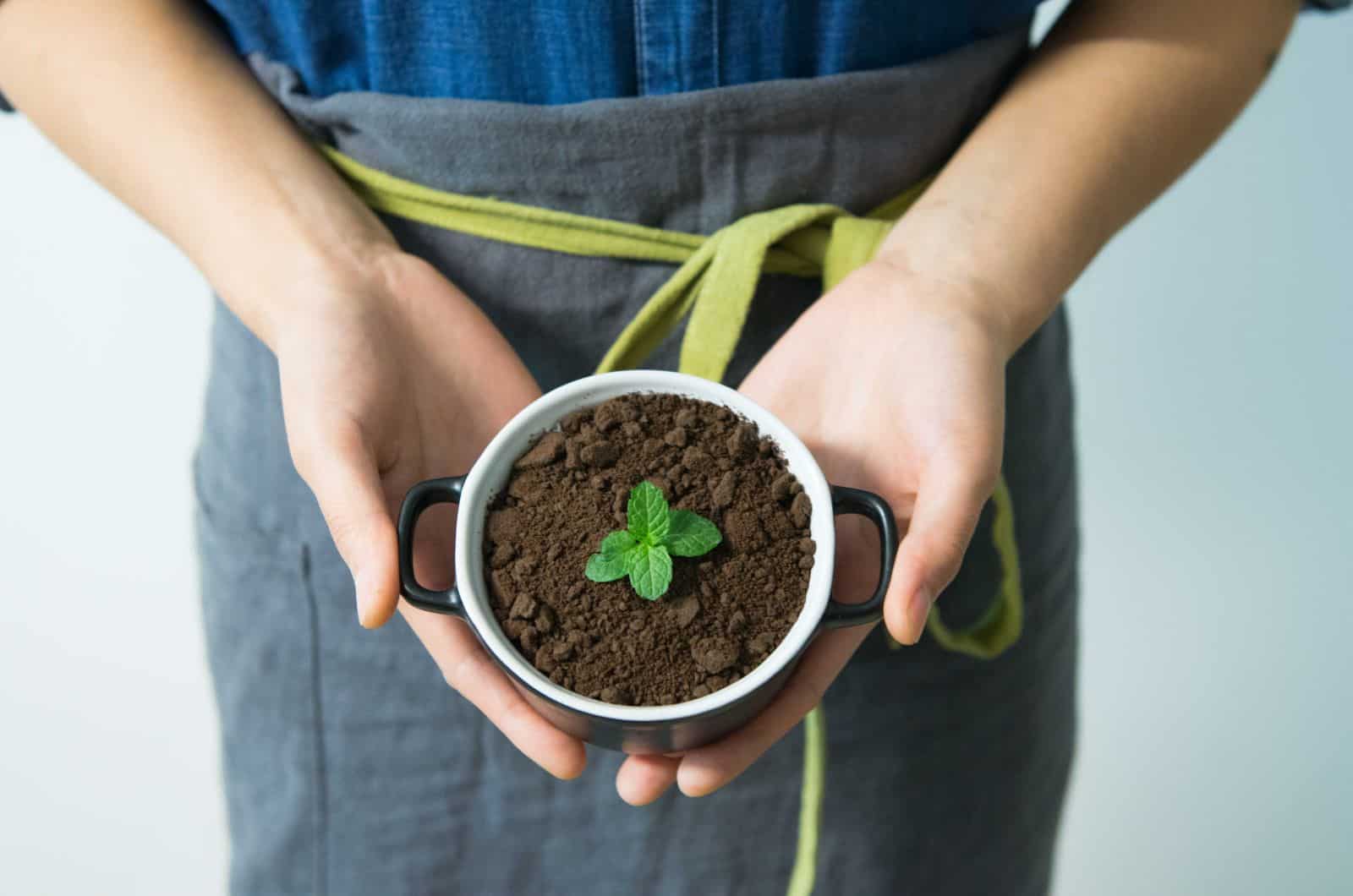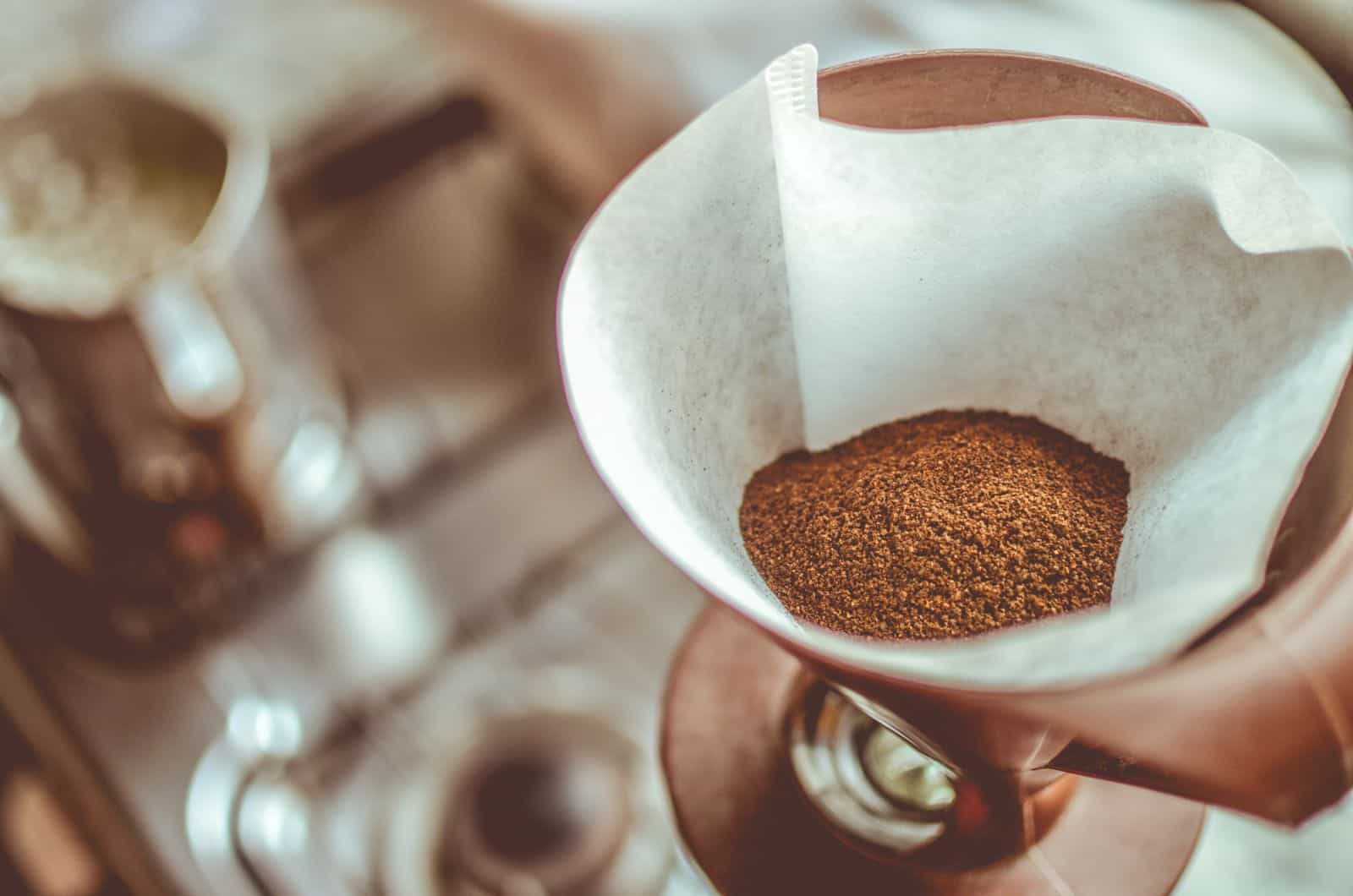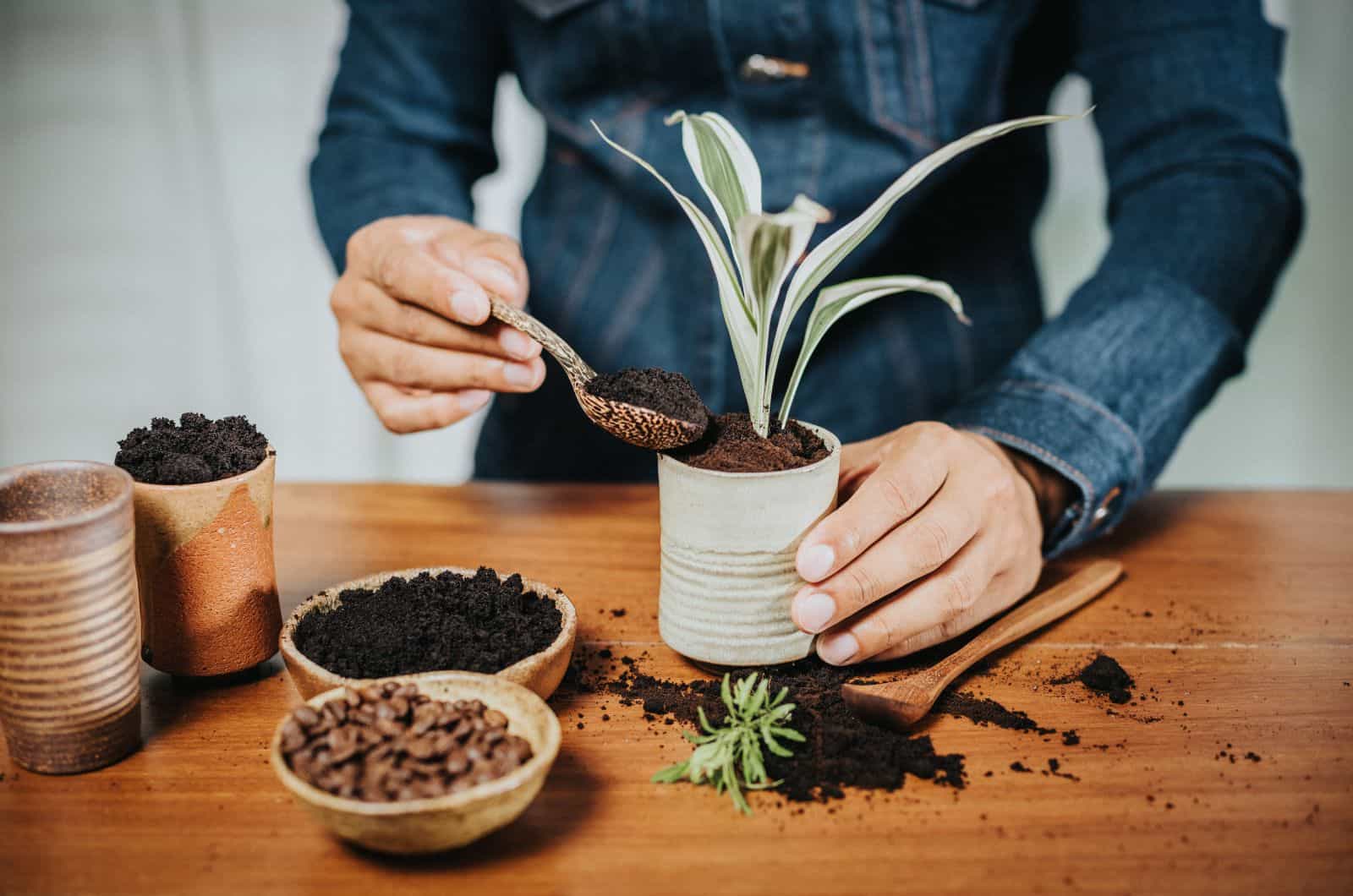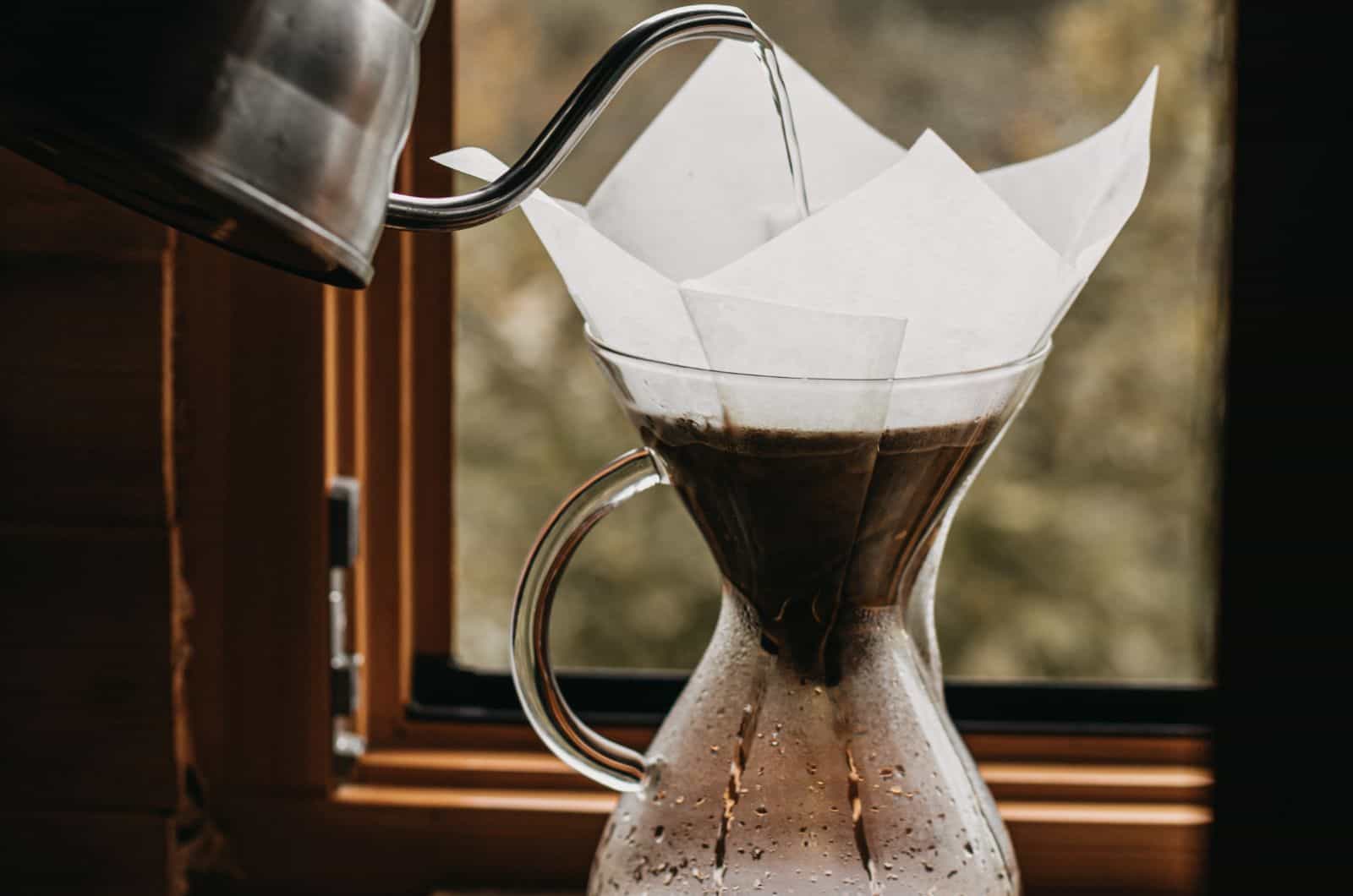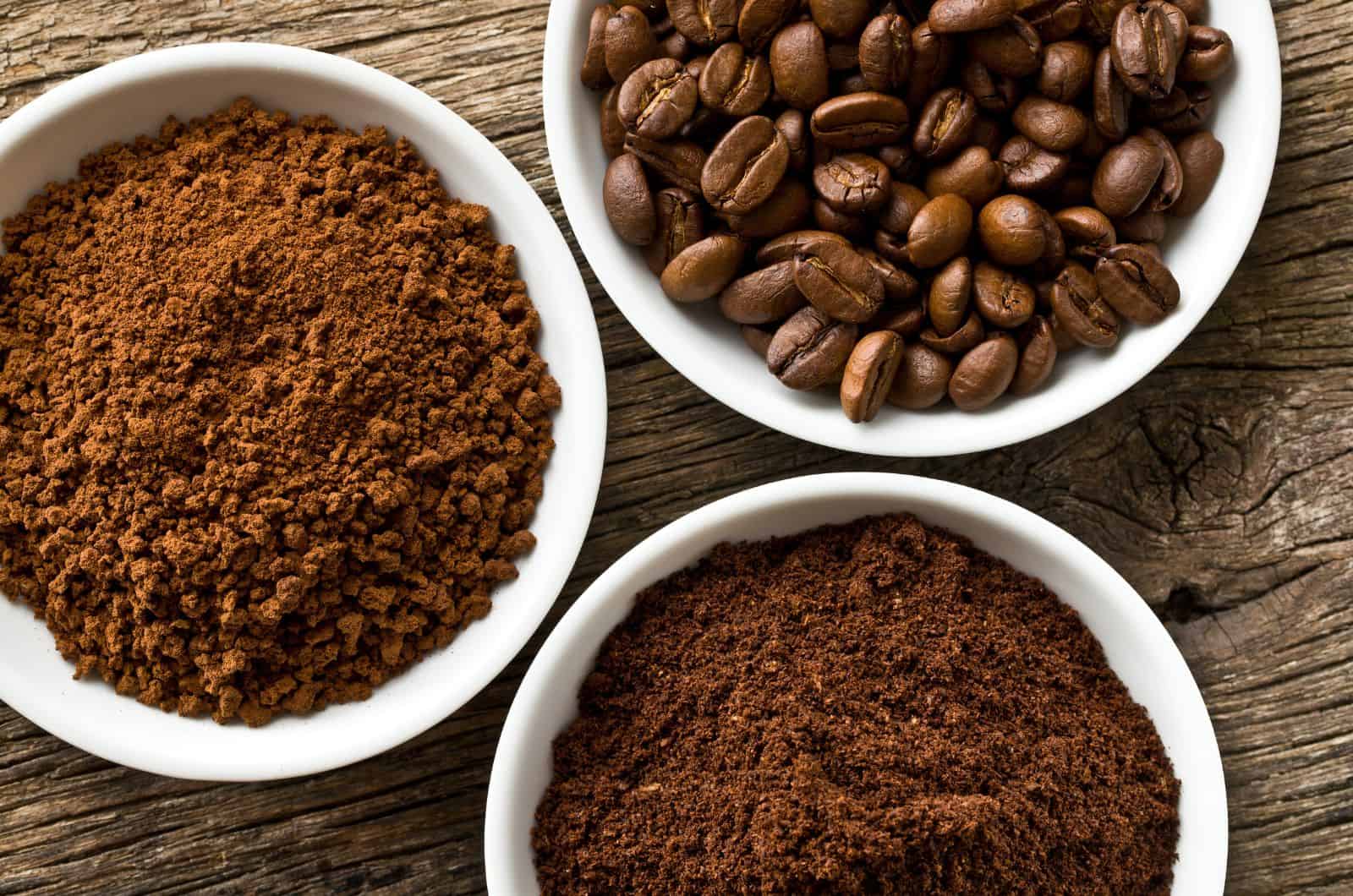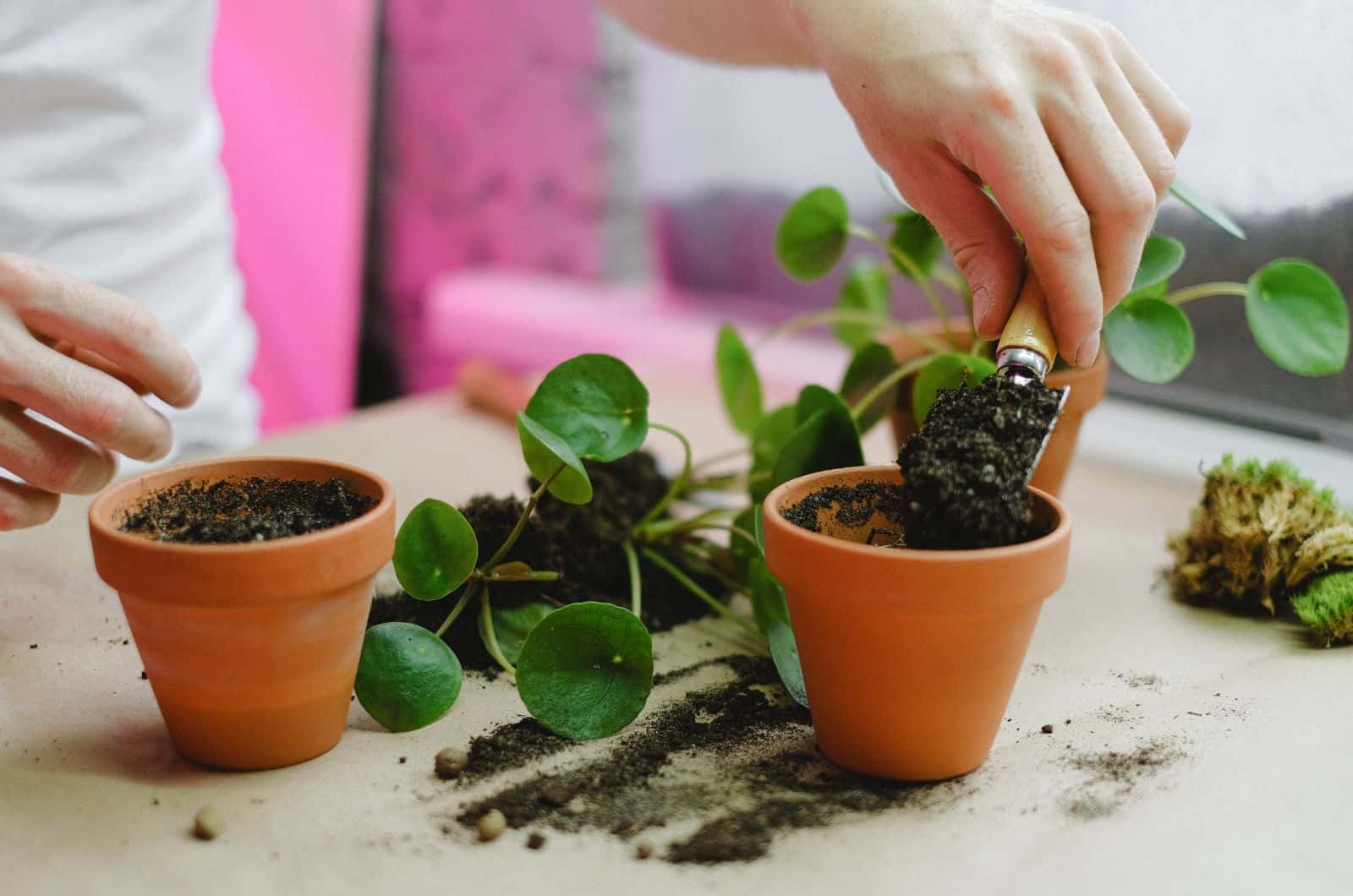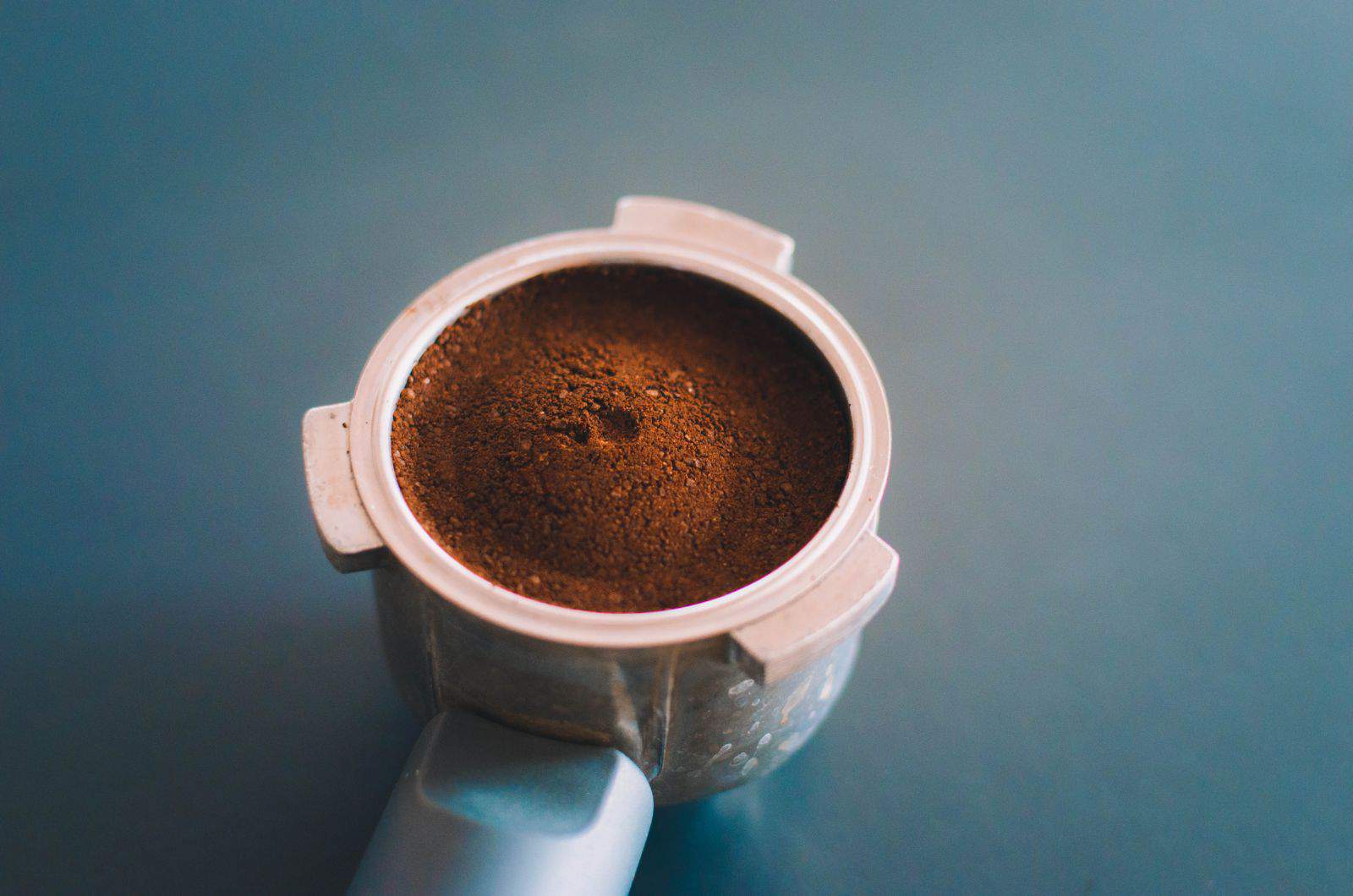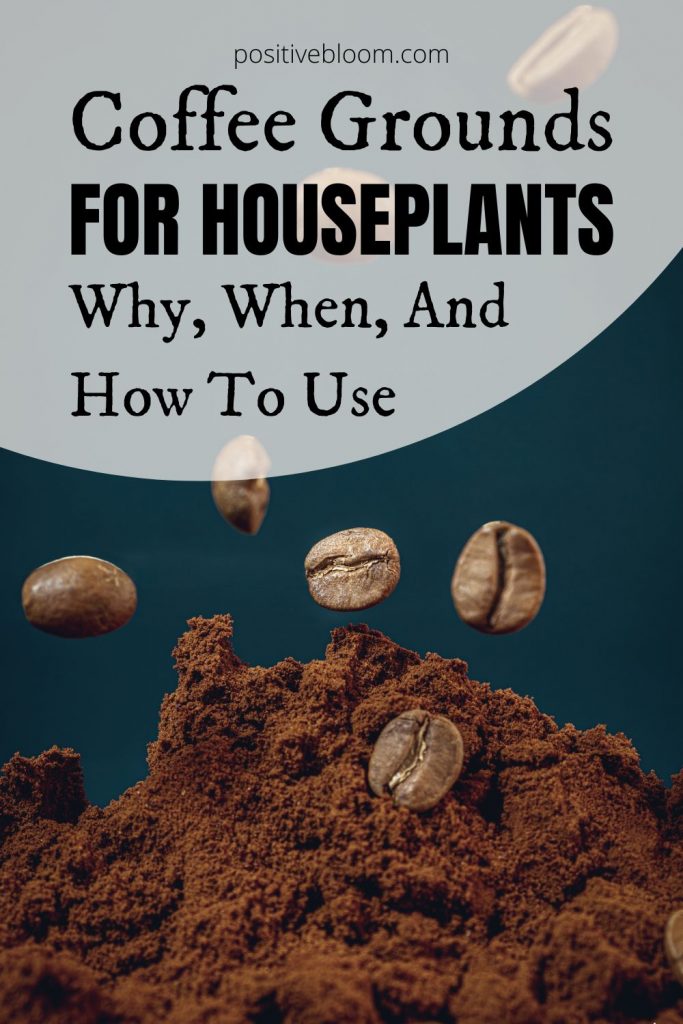Recycling kitchen scraps and using them for indoor plants is an excellent way to help the environment and save some money along the way.
There are many reusable materials we consider waste, such as eggshells, coffee grounds, banana and orange peels, etc.
These ingredients can be a great way to add more organic matter to your plants, improve water retention, increase the acidity of the potting mix, etc.
This article will focus on using coffee grounds for houseplants because there are so many benefits and different ways of using them.
We’ll also discuss the best time for using these grounds, their drawbacks, and some plants that love (or don’t love) this material.
So, let’s get started; we’ve got a lot of work to do!
Why Should We Use Coffee Grounds For Houseplants?
Many plants love coffee grounds, but have you ever wondered why?
Well, it is because coffee grounds retain more moisture, contain the macronutrient nitrogen, repel pests and attract beneficial organisms, and increase soil acidity.
We’ll discuss these benefits below, which will hopefully help you decide whether it is this ingredient that your plant needs!
Retain Moisture
Generally, if we want more moisture retention, we can just get some coco coir or peat moss. But what if you don’t have these materials at hand?
The good news is that you can use coffee grounds!
Like peat moss and coir, coffee grounds can increase water retention, improve soil structure, and help your moisture-loving plants develop.
But ensure you keep the soil moist at all times because coffee grounds will repel water if you leave them to dry out completely.
Contain Nitrogen
Another thing that makes growers around the world use coffee grounds is their nitrogen content. Therefore, this ingredient is perfect for foliage plants as they need this mineral to produce healthy, glossy, and attractive foliage.
This macronutrient also helps with plant growth as it is one of the components of chlorophyll, a compound necessary for photosynthesis. The latter process is the means of food and energy production that plants require for healthy growth and development.
But plants need other macro and micronutrients to survive, such as phosphorus, potassium, manganese, magnesium, etc.
Therefore, you should combine coffee grounds with some other materials to give your plants everything they need.
For instance, banana peel tea for plants is an excellent choice of potassium, eggshells can enrich the soil with calcium, while bone meal is high in phosphorus.
Eco-Friendly And Inexpensive
One of the things that makes coffee grounds suitable for everyone is that it is inexpensive. If you’re a coffee lover and have some leftovers, you can scatter them on top of the soil to deter pests or add them to your compost pile.
Of course, if you need larger quantities, you can always go and ask around the coffee shops to give or sell you their waste, as they’re going to throw it away anyway.
Coffee grounds are also an eco-friendly alternative to peat moss. There’s been much debate about the latter material because its harvesting harms peatlands – the surface responsible for capturing and releasing CO2 and maintaining the balance.
But the mere process of recycling your waste and reusing kitchen scraps, such as coffee grounds, is environmentally friendly.
Repel Pests And Prevent Weed Growth
Did you know that coffee grounds can repel rabbits, lizards, slugs, snails, and deer from your outdoor plants?
But why are they important for indoor plants, you may ask?
Well, this material can also deter certain bugs with a strong sense of smell, such as ants, aphids, and even mosquitoes.
Another benefit of using coffee grounds is that they can prevent weed growth. Caffeine can inhibit the germination of weed seeds, while coffee grounds mulch can stop weeds from protruding through the soil!
Help Beneficial Microorganisms
Coffee grounds are an excellent food source for earthworms, so don’t forget to work some into the soil for your outdoor plants.
However, you can use them for your indoor plants as well because they help beneficial organisms thrive, which improves soil structure and fertility.
Coffee grounds are an excellent food source for earthworms, which increase soil fertility. Of course, we don’t have these creatures in our potted plants, but no one said that using coffee grounds in your outdoor garden is off-limits!
Acidify The Soil
If you have some acid-loving houseplants, such as philodendrons and monsteras, you might want to consider adding some coffee grounds to their potting soil.
This material increases soil acidity, allowing these plants to absorb water and nutrients more efficiently.
Of course, you shouldn’t go overboard and pour freshly brewed coffee into the houseplant soil, as coffee is too acidic and can hurt your plants.
However, adding some liquid coffee fertilizer will lower the pH level just enough!
When To Use Coffee Grounds For Indoor Plants
The perfect time for using coffee grounds for your plants doesn’t exist, but the general idea is to avoid using them too frequently.
For instance, if you use this material as a means of fertilization, then you should use it approximately once a month and only during the plant’s growing season.
You can also use coffee grounds when repotting your plants if you want to add more organic material to the potting mix and make it more moisture-retentive.
If you wish to use this ingredient as a pest-repellent, only spray your plant with them once they appear.
How To Use Coffee Grounds For Plant Care
Sunflowers like coffee grounds, and if you want to make them happy and healthy, add some to the topsoil or compost.
But how can you use this material as a part of houseplant care?
You can add them to the potting soil, compost them, sprinkle them around, use them as mulch, make fertilizer, and more.
We’ll discuss each use of coffee for plants in your indoor garden so you can choose which one is the best for you and your plants.
Of course, when using this material, always use black coffee and grounds with no additives, as you can never be sure how they might affect your green buddies.
Add Coffee Grounds To The Potting Soil
If you want a slow-release, nitrogen-rich fertilizer for your houseplants, you can mix some coffee grounds into the potting medium.
To boost your already potted plants, add a teaspoon or so of coffee grounds into the soil and mix it as well as you can.
However, if you’ve just started repotting your green buddy and remembered you have some coffee grounds, you can add 1/4 cup to every 4-6 cups of growing medium.
Too many coffee grounds can lead to clumping and excess moisture, so use this ingredient sparingly.
Scatter The Coffee Grounds On The Soil
One of the things we love most about coffee grounds is that they’re super easy to use, and there are a ton of ways to do it.
If you’re in a hurry and need a quick nitrogen fix or pest-repellent for your plants, you can scatter the coffee grounds on the potting mix. You can also mulch your plants with coffee; just make sure they’re never dry, or else they’ll repel water.
Mulching with these grounds can prevent weed growth, introduce more organic materials as they decompose, and keep the soil moist for longer periods, so you won’t have to irrigate your plants frequently. It also deters pests.
Make A Fertilizer Tea
Making a coffee fertilizer tea is one of the best ways to get nitrogen to your plants quickly. Liquids are generally absorbed faster than granules or grounds, which is why this fertilizer is an excellent solution to nitrogen deficiency.
Of course, fresh coffee is too acidic and can hurt your plants, but diluting it into tea will give you all the benefits without any serious consequences.
The good news is that you don’t need fresh coffee grounds to make this tea. Simply make another pot of coffee with the used coffee grounds, and let it cool down before applying it to your plants. Or you can soak the used coffee grounds in a lot of water for a couple of hours!
However, too much nitrogen can result in leggy plants, so don’t feed your plants with coffee too frequently.
Use Coffee Grounds To Make A Pest-Repellent
If you want to repel pests, you can scatter some coffee grounds around your plants. However, if the nuisances have already appeared, you can also make a spray deterrent that will banish aphids, snails, slugs, etc.
Mix two tablespoons of used coffee grounds with a cup of aromatic herbs, such as lavender, rosemary, sage, thyme, etc., and add two cups of water.
Leave it to steep for at least a day, transfer it into a sprayer, and start spraying.
Add Coffee Grounds To The Compost Pile
Another thing you can do with coffee grounds instead of throwing them away is compost them. They will enrich the compost with nitrogen and make it perfect for all plants that enjoy slightly acidic soil, such as roses, hydrangeas, rhododendrons, etc.
Just be careful of the volumes of all materials, as too much caffeine in compost can be detrimental to your plants.
Watering Plants With Coffee
Freshly brewed coffee is an excellent way to start your day, but let’s face it, we always leave a few drops at the bottom of the mug!
If you hate waste as much as we do, you can pour the leftover coffee into the pot or give it to your outdoor plants.
However, don’t do it every day, as it can make the soil too acidic, and your green friends won’t love that!
Finally, coffee with added cream, milk, or sugar isn’t suitable for watering as these additives may harm your plants and even attract pests that feed on that stuff.
Are There Any Drawbacks To Used Coffee Grounds?
It is important to emphasize that coffee grounds are not the go-to solution for all your plant problems; they can even create new ones if you’re not careful when using them.
Coffee Grounds Can Lead To Root Rot
They have great moisture retention abilities, and if you use too much, the soil will remain wet for longer periods. If you continue irrigating your plants regularly, it can lead to overwatering and root rot.
This fungal disease can kill your plant if you don’t treat it or recognize it in time, so it’s always best to prevent it!
One of the key plant care tips we give every new grower is to irrigate your houseplants only when the topsoil dries out.
Coffee Grounds Can Repel Water
It seems like we just keep contradicting ourselves, but that’s not the case! Yes, coffee grounds retain a lot of moisture and even lead to root rot if we’re not careful, but they can also repel water.
If this ingredient is kept moist at all times, there shouldn’t be any issues, but if you allow it to dry out completely, it’ll become hydrophobic.
The coffee grounds will compact, and the water won’t penetrate them. Instead, it’ll just avoid them, barely reaching the roots.
Of course, this issue usually occurs if you use this material as mulch, so make sure to keep them slightly moist at all times.
Coffee Grounds Can Inhibit Plant Growth
One of the benefits of coffee grounds is encouraging plant development, so why do we now talk about them stunting growth?
Well, it is all because of caffeine! This substance distorts and destroys plant cells, leading to stunted growth or even death if the concentration isn’t reduced.
Therefore, using great quantities of grinds in the potting mix or as mulch can inhibit plant growth or have fatal consequences, so remember not to use too much!
Are Coffee Grounds Good For All Houseplants?
Many common houseplants adore coffee grounds, but there are also some that detest them.
Below, you can find plants from both categories and learn which ones can help you recycle your coffee waste and which ones would appreciate it if you stay away from them when holding a cup of coffee!
What Plants Like Coffee Grounds?
There is a list of houseplants that like coffee grounds, and plants such as African violets, Christmas cactus (which is not a real cactus), philodendrons, pothos and spider plants, monsteras, etc., are on it.
However, coffee grounds are good for roses, and if you have some miniature rose variety you’ve been dying to grow in a pot or indoors, you can use some coffee grounds to entice their vegetative growth (but never use too much!).
All these plants love moisture, so it’s not surprising that this ingredient is an excellent means to deliver them that, as well as some nitrogen along the way.
Which Plants Don’t Like Coffee Grounds?
Not all plants prefer coffee grounds as their nitrogen source. Succulents and cactuses aren’t fans of this material just because they prefer dry soil.
Coffee grounds retain moisture, which can lead to overwatering and fungal diseases in no time!
Final Thoughts
This article brought everything you need to know about using coffee grounds for houseplants.
We included their main benefits, such as retaining moisture, enriching the soil with nitrogen, deterring pests, preventing weed growth, attracting beneficial microorganisms and earthworms, and acidifying the soil.
Of course, they also have their drawbacks, such as leading to root rot, compacting the soil, and inhibiting plant growth, but you can avoid these side effects if you use the coffee grounds sparingly.
We discussed the best time to use this material, brought some suitable ways of using them in your indoor garden, and included some plants that like (and don’t like) them!
Happy recycling, and until next time!
Like this post? Share or pin it for later!

